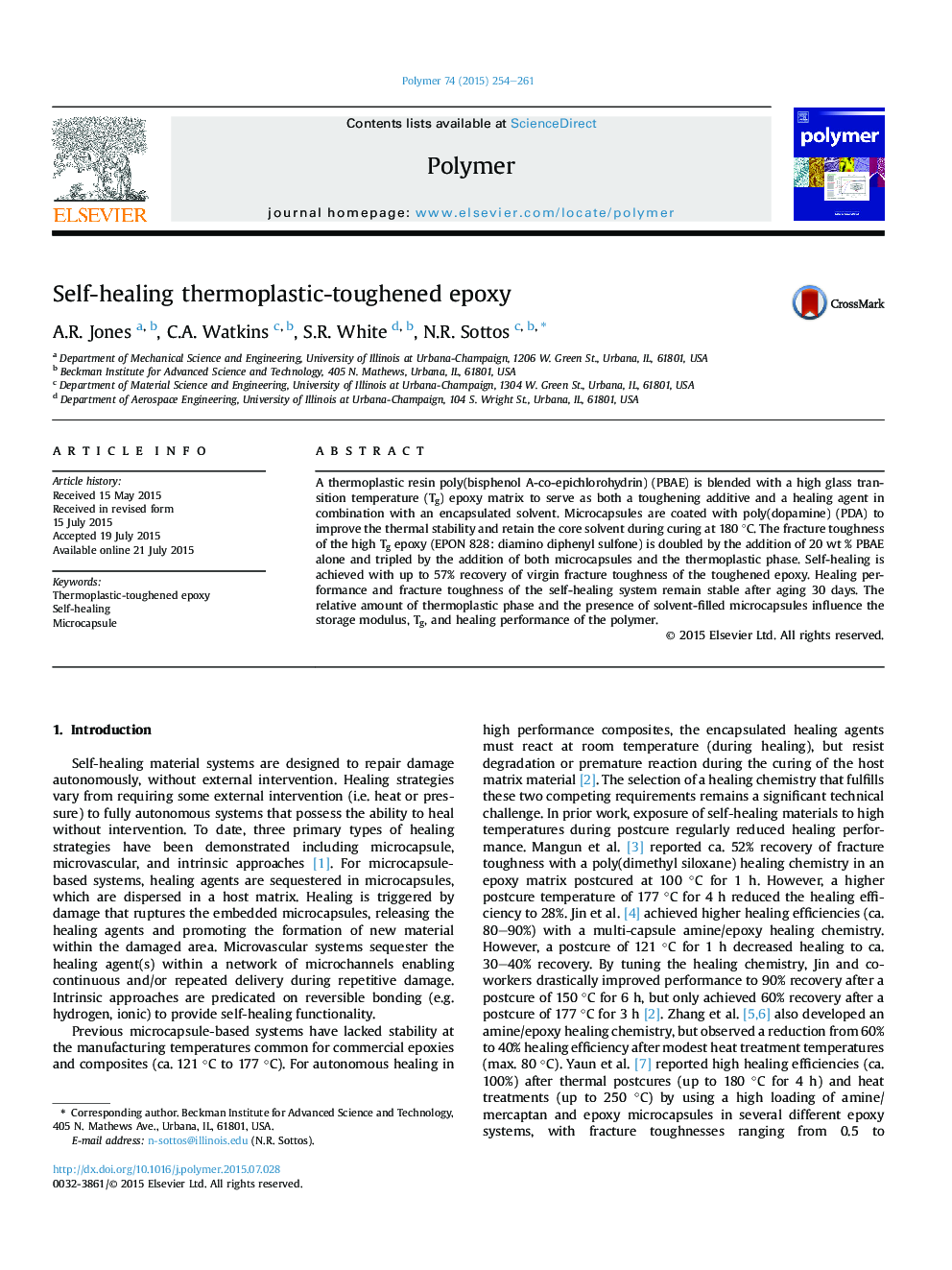| Article ID | Journal | Published Year | Pages | File Type |
|---|---|---|---|---|
| 5179759 | Polymer | 2015 | 8 Pages |
â¢Solvent-filled capsules survive a 180 °C cure cycle in a thermoplastic-toughened epoxy.â¢The thermoplastic and solvent combination allows simultaneous toughening and healing.â¢Fracture toughness and healing performance are stable after 30 days aging (at RT).
A thermoplastic resin poly(bisphenol A-co-epichlorohydrin) (PBAE) is blended with a high glass transition temperature (Tg) epoxy matrix to serve as both a toughening additive and a healing agent in combination with an encapsulated solvent. Microcapsules are coated with poly(dopamine) (PDA) to improve the thermal stability and retain the core solvent during curing at 180 °C. The fracture toughness of the high Tg epoxy (EPON 828: diamino diphenyl sulfone) is doubled by the addition of 20 wt % PBAE alone and tripled by the addition of both microcapsules and the thermoplastic phase. Self-healing is achieved with up to 57% recovery of virgin fracture toughness of the toughened epoxy. Healing performance and fracture toughness of the self-healing system remain stable after aging 30 days. The relative amount of thermoplastic phase and the presence of solvent-filled microcapsules influence the storage modulus, Tg, and healing performance of the polymer.
Graphical abstractDownload high-res image (600KB)Download full-size image
